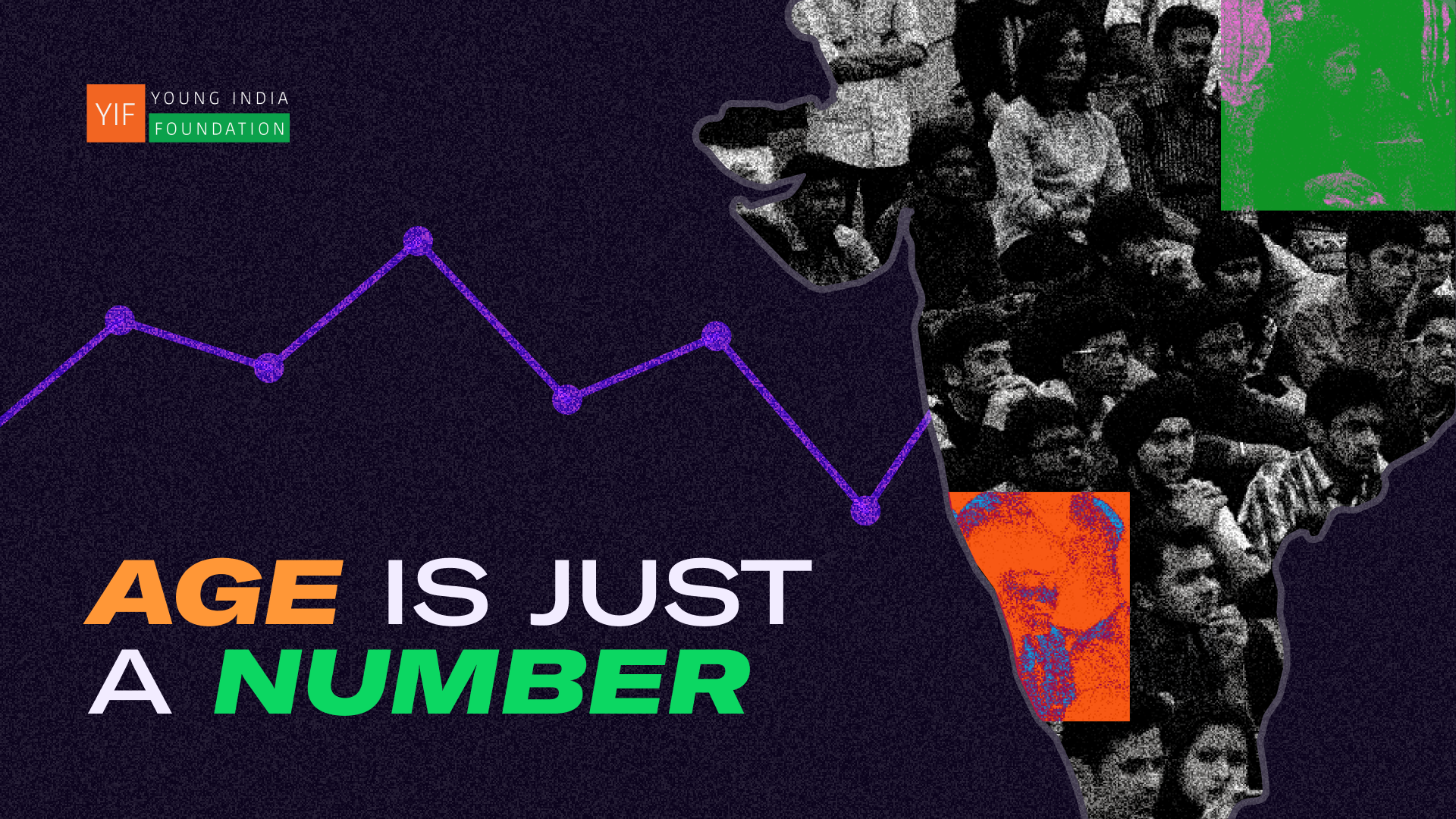Recent trends have shown the youth to spend less and less time on legacy media- shifting to new media to make themselves aware. This has prompted politicians to change their communication methods. Many politicians adopt well‑researched strategies to target youth, combining information and entertainment. Conversely, others mistake mere virality for substantive impact. This piece talks about how politicians successfully and unsuccessfully traverse the harsh social media terrain to target the youth vote and the changing and challenging landscape of youth-targeted media.
Shifting Media Dynamics for Young People
Global statistics show a rapid decline in legacy media platforms which include print and online newspapers, television news, and radio. This trend is felt most strongly by young people due to a variety of reasons. A study in 2024 revealed that 80% of Americans no longer trust legacy media, up from 70% in 2022. Similar trends are reflected in Australia, the UK, and Europe. The Reuters Institute says:
“In most countries we find traditional news media struggling to connect with much of the public, with declining engagement, low trust, and stagnating digital subscriptions.”
This can be attributed to a loss of credibility or independence, the emerging attention economy where fast, emotional, and visual content is preferred, and competition from social media.
Studies have shown that globally - especially among young adults- new media is increasingly preferred over traditional platforms. Reports say that in the Philippines, Thailand, Kenya, and India more people now say they prefer to watch the news rather than read it, further encouraging the shift to personality-led news creators- a trend seen in most countries. Emphasizing on the age demographics of this trend, we see that groups aged 18-24 experience it the most. The World Economic Forum says globally, 44% of 18–24-year-olds cite social media or video as their main news source, compared to under 30% in older age brackets.
A major reason young people reflect this trend the most is because their expectations from news itself differ from those of older generations. A Reuters Institute report says:
“The role of news for young people appears primarily individualistic; it’s about what it can do for them as individuals – rather than for society as a whole.”
The report emphasises that the core attitudes about expectations from the news differ in young and older audiences- with young people enjoying more “progress” based and “enjoyable” content. It is safe to conclude that young people are moving away from legacy media in favor of content that is both entertaining and informative, also commonly referred to as infotainment, which is more prevalent on social media and podcasts.
Political Messaging on New Media
Given the youth’s preference to consume news on new media- politicians are increasingly choosing to connect with young voters through social video. A study says political advertisers spent $1.9 billion on online ads for the 2024 American Presidential election on the four largest digital platforms (Meta, Google, Snap, and X); this figure was $22 million in 2008 when Barack Obama won the presidential election. Political canvassing on new media platforms has not only seen to be prevalent but also very fruitful- especially for garnering interest from young voters, say reports.
Youth Culture Aesthetics in Political Campaigning
While canvassing on social media apps like TikTok and Instagram, politicians have begun to incorporate contemporary youth culture aesthetics in their campaigns, for added relatability and a boosted algorithmic reach on the youth-dominated platforms. This has been done most recently by the Democratic nominee for mayor of New York City- Zohran Mamdani. Instagram and TikTok play an important role in his electoral campaign alongside significant ground work. He boasts an impressive follower count of 3.7 million followers, a steep difference in numbers from his main opposition- Andrew Cuomo, who has 199,000 followers with a similar number of posts, and Eric Adams who has 1 million followers with more than four times the posts.
The aesthetics of Mamdani’s campaigns revolve around the retro subculture, which is currently trending heavily amongst young people. He uses retro fonts, digital point-and-shoot style photographs, and a nostalgic green and brown color-grading filter on most of his videos. These choices are intentional as they appeal to the youth he is aiming to reach through social media. A GWI blog writes “Gen Z has shown to demonstrate a strong preference for retro and vintage trends, with a significant portion embracing styles from the 90s and early 2000s.” Research shows Gen Z has brought upon a resurgence in point-and-shoot digital cameras with over 60% owning one, and #digitalcamera having over 287000 posts on TikTok. These intentional design choices proved to be successful, as Financial Times reported that a recent poll, showed 52 % of likely voters under the age of 45 support Mamdani, compared to 18 % for Cuomo.
His use of trending aesthetics made his political content something the youth wanted to watch- referring back to the contemporary individualistic attitude of the youth relating to the media they choose to consume. Harnessing this core shift in the latest demographic, Mamdani was able to amass significant youth support. However, it is important to note that an additional factor attributing the increased youth votes could also be his proposed policy changes and him being a younger politician himself.
The Misapplication of Digital Pop Culture in Party Messaging
Although an aligned use of trending subcultures has proved to have a positive young voter turnout, the misapplication of internet culture in political messaging has seen limited effects. A popular example of this is Australia’s Labor Party using the ‘brain-rot’ online culture in their meme-based social media political campaign. The term ‘brain-rot’ can be defined as a genre of hyper-stimulating, low-context and absurdist content that is algorithmically incentivized. It has little meaning and thrives on attention-fragmented digital spaces.
Australia’s Labor Party's extensive political messaging through the use of memes referencing the brain-rot culture in the 2025 Australian Federal elections had a mixed response- one with considerable negative reviews. However, as the opposition, Liberal Party, also had a heavily meme-based campaign strategy that had a similar response by the same demographic- the effects of the adoption of these campaign strategies was not as heavily seen in the voter turnout, with Labor Party’s Prime Minister Anthony Albanese being re-elected.
The memes put forward by the winning party consisted of popular artistic icons resonating with the brain-rot culture combined with brief political messaging. Amongst young people that had a negative reaction to this political move, a leading reason cited was that the campaign seemed inauthentic, forced, and out-of-place. A dominant reason for this reaction could be the poor balance between focusing on voter concerns and delivering information to them in an entertaining way. The increased focus on the latter made the content look unprofessional and pandering. This is evidenced by Melbourne University student Nathan Tarrant speaking to the Swanton Gazette saying “..I think it makes our generation seem really unserious about politics when that’s not necessarily the case,” A published article says that UniSA’s journalism student-run news platform On The Record also had a respondent describe the content as “a vain attempt at convincing youth audiences with humour and rhetoric above actual policy.”
An over-reliance on memes with little connection to ongoing political concerns was interpreted as performative. This shows that young voters, though with tendencies to prefer entertaining content, put a vital significance on an equal integration of informative aspects to political messaging as they do on its entertaining qualities. Testimonies show that the misapplication of internet culture can also be deemed as misuse of the rhetoric itself. And that a considerable demographic of youth still values substance over mere entertainment in political communication.
Youth Engagement with Long-Form Political Content
An erroneous assumption made by Australia’s Labor Party was underestimating young peoples’ preference to substantive online content- one turned around by the overwhelming response to Donald Trump’s three-hour-long podcast with podcaster Joe Rogan. The video reached more than 20 million views in the first twenty hours, and 40 million views by election day, making it one of the most watched YouTube videos of all time, say reports. Trump’s active new media strategy reflected positively in the voter turnout for 2024 presidential elections.
The Pew Research Center says that two-thirds of adults under 30 say they have listened to a podcast in the past 12 months, as do almost six-in-ten respondents ages of 30 to 49 (58%). Listening drops off substantially among older groups, to 42% among those ages 50 to 64 and 28% among Americans 65 and older. Data shows that 51% of Joe Rogan’s listeners fall in the 18-34 age range and span the political spectrum. Trump’s increased focus on targeting the youth demographic resulted in being successful. This is evidenced by Americans under the age of 30 voting clearly for the Democratic candidate in 2020, with less than 40% supporting the Republican contender. In 2024, the situation experienced a major shift with Trump gaining 10 percentage points among the youngest voting groups, who habitually lean toward progressive candidates, according to reports.
This podcast was rapidly and heavily popularised, with clippings going viral on multiple social media platforms shared and reshared by users creating a multiplier effect racking up billions of views in total. This allowed it to better resonate with young people unfamiliar with Trump and help popularise his campaign altogether. Eric Wilson, a Republican digital strategist, said “Mr. Trump had taken advantage of TikTok in a way that other Republican lawmakers had not.”
The podcast’s success shows that young audiences will engage with long-form content if it feels genuine and relatable, despite a general preference for short-form media outlined by several studies. The podcast did not include any trend nor meme, it was a bona fide conversation that reports describe to have deeply “humanized” Trump- resulting in its massive traction amongst new media platforms used by the youth.
Conclusion
In conclusion, politicians are maneuvering and adapting their political communication on new media platforms to the content consumed by the youth. Unlike older generations, the youth’s desire to consume media is individualistic- focusing on content they find entertaining and informative rather than consuming news with a duty-like attitude to make themselves aware seen in the older generations. Subtly, yet authentically integrating trending subcultures in political campaigns have shown to be effective in connecting with the youth. However, misaligned attempts to trendhop by politicians have been perceived as pandering in the past. The popularity of lengthy podcasts during the 2024 American Presidential elections demonstrates that young audiences are not averse to informative and extended content; rather, they are highly responsive to material that is genuine, relatable, and personal - qualities that have contributed to the unexpected success of the podcast format to target the youth vote.
Image credits : Theo Von/ Youtube




 (15).png)
